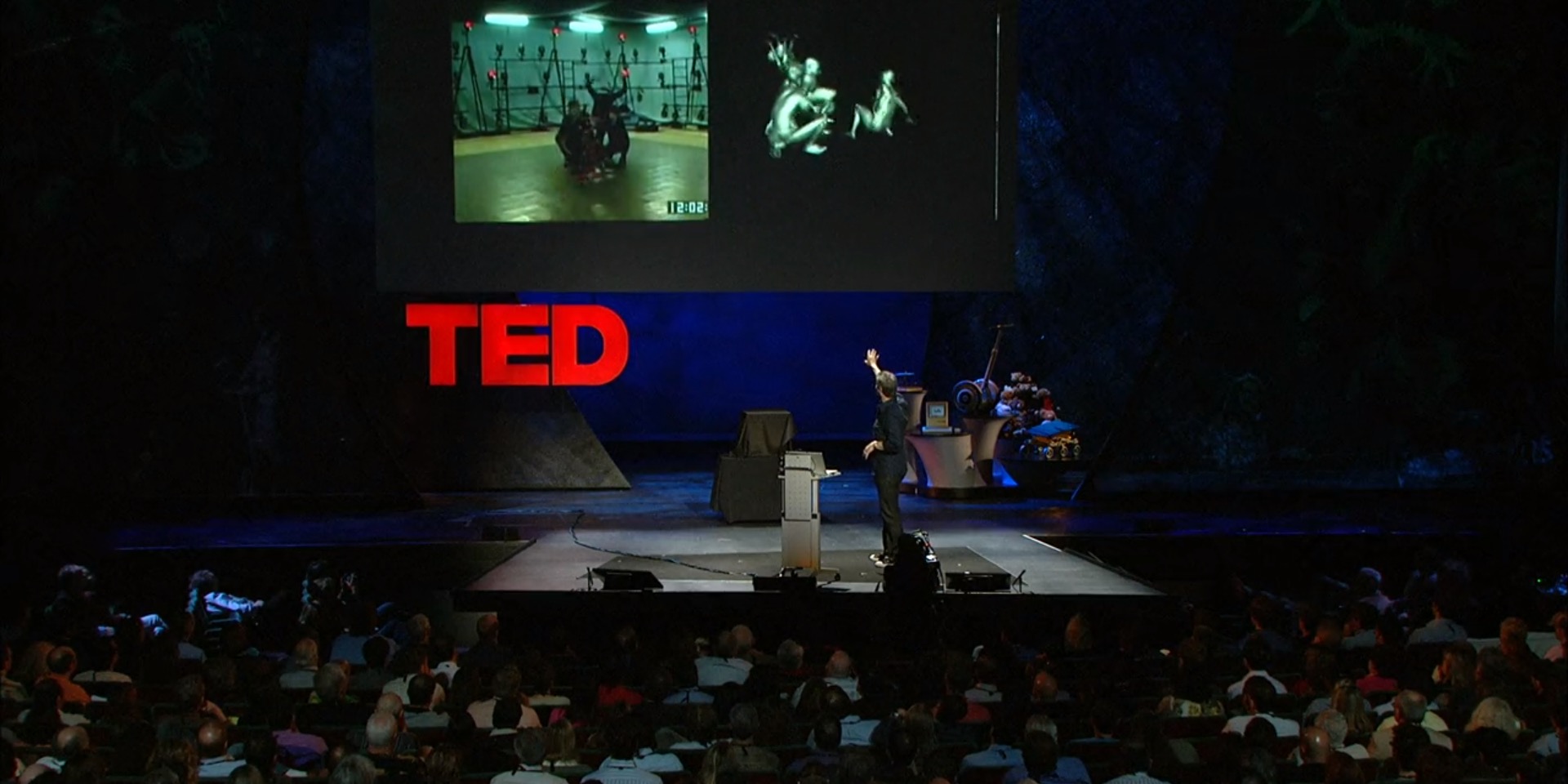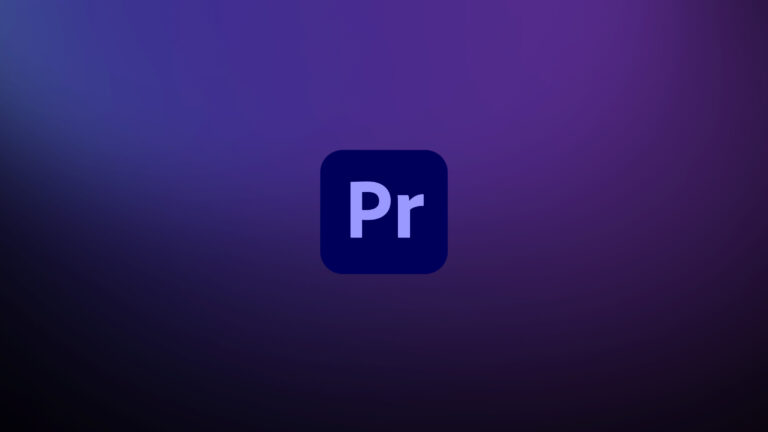Let’s address the elephant in the editing bay right off the bat: the Frame.io Insider has made a name for itself by providing original written content that provides in-depth information that is actionable and tactical. So, when they asked me to write this piece, it seemed off their beaten path.
But what I found interesting was that I was given two important directives:
- Find diamonds in the rough: these presentations provide valuable information for creative professionals, but have not already been seen millions of times (e.g. you won’t find J.J. Abrams’s “mystery box” TED talk on this list).
- TL;DW-it (“too long; didn’t watch): distill the videos into bite-size bullet-points, so if you don’t have the time to actually watch everything, you can still walk away from this article enlightened.
The videos included in this list cover a wide range of topics that are interesting and useful for editors, sound designers, colorists, VFX artists, and other open-minded and inquisitive makers. From discussions about foley, sound libraries, and life-casting, to talks that focus on entrepreneurship and taking risks—there is something here for all, even if the job title of the presenter doesn’t exactly match the one on your LinkedIn profile.
We’ve tried to assess which presentations appeal to specific fields based on the content, but that is merely a loose guideline that we hope you ignore because there is something to be gained from each and every entry.
So let’s begin.
1) How Benjamin Button Got His Face
Named one of Fast Company’s “Most Creative People” in 2009, Ed Ulbrich is the current president of Method Studios and the former producer and CEO of Digital Domain, the visual effects agency whose credits include Fight Club, Adaptation, Titanic, Armageddon, and the Academy award-winning film, The Curious Case of Benjamin Button. Ulbrich is uniquely qualified to speak on the changing face (literally) of VFX as a producer with 20+ years experience and a former effects supervisor.
Why the talk matters and who should watch:
Ed Ulbrich’s TED Talk focuses on the groundbreaking work done to turn Brad Pitt into the titular backward-aging character in The Curious Case of Benjamin Button. Over the course of 18 minutes, Ulbrich goes in-depth into the process, sharing details about how the film had been in development limbo for years, about the camera setups, software, and lifecasting methods used to capture the details of Pitt’s face, and about other technical aspects of the project. His insights are useful for visual effects artists, editors, and other creatives working to seamlessly combine the traditional with the innovative.
Top take-aways:
- Ron Howard was originally set to direct Benjamin Button
- Based on F.S. Fitzgerald short story
- During the first hour of the movie, Benjamin’s head was entirely CGI. No make-up.
- WB and Paramount were involved/
- Did a screen test in ‘94.
- Ed threw up when he got the go-ahead to make this movie.
- They used Facial Action Coding System and Contour technology as opposed to traditional motion capture.
- They created a 3D database of every possibility of what Brad’s Face could do.
- They used image analysis of Brad’s actual facial performance to map onto the CGI head.
- They created individual detailed CGI renders of each area of Brad’s face (e.g. tongue movements, eye movement, etc.)
- Took 155 people over two years to create.
2) Cinematic Storytelling- The Heart vs. The Head (TEDxMaui)
Paul Atkins is a Hawaii-based cinematographer who specializes in natural history documentaries. His filmography includes numerous projects for National Geographic, PBS, BBC, and IMAX. Atkins’ work has earned him two BAFTA TV awards, two Emmys, and several other nominations.
Why the talk matters and who should watch:
Atkins speaks about the power of film to affect viewers on an emotional level, and how that appeal to one’s humanity can in turn affect change. While he focuses primarily on sharks, dolphins, and the Northwestern Hawaiian Islands to illustrate a point, the broader lessons in the talk can be useful for any storyteller searching for ways to appeal to an audience on multiple levels.
- On average, sharks kill 4 humans per year. Humans kill 70 million sharks.
- The limbic system controls emotional reaction. How do we override this system with the power of filmmaking.
- You need to appeal to the heart vs. the mind if you want to affect change.
- He compared the efficacy of “blue chip” documentaries (ones which discuss the natural environment, e.g. “Planet Earth”) vs. environmental films which highlight the endangered aspect. The former far outpaces the latter. People are less inclined to want to watch films about the problems of man’s effect on the environment. Those appeal to the wrong side of the brain: the rational.
- Appealing to emotional sometimes illustrating controversial issues (like the killing of feral pigs in Maui whose breeding were killing other aspects of wildlife).
- In a 2-week period, he and the Gusteau team discovered a mountain of nets and debris in the coral reef off the northern part of Hawaii
- Dolphins have a dark side we should be aware of.
- He ends with a disturbing video of fishermen beating and torturing a small great white hanging from a noose over the deck of the ship, its guts hanging out, the animal making almost “crying-like” sounds as the fisherman beat it with a bat. And in that image, he leaves you with sympathy for one of the scariest animals on the planet.
3) Everything You Hear on Film is a Lie (TEDxAthens)
Tasos Frantzolas is the founder of Soundsnap, one of the industry’s largest music and sound effects libraries. In his 2016 TEDxAthens talk, Frantzolas shares how common sounds are made and how sound design can completely change a film.
Why the talk matters and who should watch:
This talk provides a quick behind-the-scenes look (and listen) at an important part of movie picture production. Obviously, it is useful for viewers who want to learn more about sound design and editing, but it is also something that anyone who watches television or film would find interesting. Once you discover how the sound of broken bones and flapping wings are made, you will have a newfound respect for the engineers and designers responsible for most of the information that your brain processes while consuming media.
- Our brains are conditioned to embrace the lies.
- He quotes Oscar Wilde’s “The Decay of Lying” All bad art comes from copying nature and being realistic, and all great art comes from lying, deceiving, and tell beautiful, untrue things.
- He gives a series of examples of popular sounds created by completely unrelated situations (e.g. a punch is the sound of a knife stabbing
- Adding reverb gives us information about the space between the person and the thing creating the sound.
- Silence preceding verbal communication can create a lot of tension.
- Silence needs loudness and loudness needs silence to mean anything.
- Room tone is used to help create ambiance
- Separating the voice from the speaker, acousmatic sound, creates a sense of authority (e.g. hearing the “voice of God” from above; the “Wizard” behind the curtain in The Wizard of Oz, etc.)
- By hiding the source of sound creates mystery and tension.
- Sound is a language that can create a series of emotions or transport us to different locations, etc.
4) Korey Pereira – Sound Designer (Creative Mornings – Austin)
Korey Periera is a sound editor/mixer, and also the founder and creative director of the Texas-based audio post-production company, Soularity Sound.
Why the talk matters and who should watch:
Speaking from a different, more hands-on point of view than Tasos Frantzolas (above), Pereira shares examples both from the worlds of fiction and nonfiction. He walks the audience through the process of cleaning up audio tracks and working with a foley artist to add non-library sounds to a war documentary that would have been present but not picked up by the GoPro a soldier was using during a firefight. If you’re interested in documentary filmmaking or foley, you’ll find this talk worth viewing.
- When capturing sound on set, production sound mixers might use anything from boom
- “We can fix it in post” is the scariest things a post-pro audio person can hear.
- The film “Hard Reset” is a perfect example of what a sound designer does. There are a whole host of items to create sound for: flying ships, cityscapes, futuristic mechanics, etc. The sound designer needs to figure out “What does a city in the future sound like?”
- Sound designing can even be used in documentaries. He used an example from a documentary that followed soldiers in the field with their dogs. He first cleans up the raw production audio. He then added a series of sound effects to increase the intensity to match what actually happened on site, but couldn’t be authentically portrayed from a GoPro.
- Foley was used heavily in this to create the sound of the dog footsteps, the dog collars, the soldiers footsteps, etc.
- Audio mixing is taking all the sounds created, then putting them together in the final production in the right proportion to meet the director’s vision.
5) “Do What You Love” (Creative Mornings – ATL)
Ben Chestnut is the co-founder and CEO of Mailchimp, one of the leading email marketing services for small and large businesses alike. He is bad at math but really into computers, graphics, and design. He is listed on the Forbes 400 list for 2018, was awarded “Most Admired CEO” in 2017 by the Atlanta Business Chronicle, and his company currently has over 1,000 employees. In his 2011 Creative Mornings: Atlanta talk, Chestnut opted not to talk about email marketing and instead spoke about creativity and loving what you do.
Why the talk matters and who should watch:
Chestnut’s talk is very funny and (though it seems like a bit of a cop-out) applies to anyone who considers themselves a creative working in a creative industry. The full talk is 42 minutes long (third embed below), but here are a couple key excerpts worth watching right now to sell you on the talk as a whole, because the title does seem very cliched.
The little ways assemble pieces from other stuff. Just keep making stuff.
- Give yourself two weeks.
- Keep meetings to a minimum.
- He floats around, buzzing around like a bumble bee, asking people what they’re working on. This allows him to have an overall big picture view, allowing him to help his team better connect with one another.
- Entropy is the study of waste and disorder, conceived by a French scientist.
- Nature loves chaos. Managers hate disorder, but they should embrace it. But no chaos, there’s no work or output.
- There is a lot to cover in this presentation. Watch the first 30 seconds and I guarantee you will be drawn in to watch the rest.
- After ten years of always being asked to speak about email marketing, he relished the opportunity to speak about a different topic as it pertains to creativity.
- The title of his presentation is: “Controlled Chaos and the Maximization of Entropic States as Applied to Steam Engines (and Creative Business Environments)
- He gives a background on how he started Mailchimp, and how he created an environment that allows his employees to take creative initiatives that have nothing (at first) to do with email marketing, but somehow get introduced into the product.
6) Antisocial Theory (Creative Mornings – SEA)
Mike Gaston is the co-founder and creative director of Cut.com, a Seattle-based media company with over 8 million subscribers on YouTube that is known for its often viral video content. In his talk, Gaston discusses what it means to go viral, how Cut.com works, and things he has learned as a creator.
Why the talk matters and who should watch:
Gaston’s goal to create “premium short-form content” that spreads is one that online content creators will find interesting. The talk is less about the formula for going viral and more about the motives, rewards, and even the failures of that pursuit.
- He approached doing this presentation like he usually does, his 3-point process: 1) agreed to do it without thinking; 2) procrastinated as long as possible; and 3) made excuses for the quality of the content to lower expectations. (Yes, the presentation is funny, and insightful).
- He showed clips from some of Cut’s most funny and provocative viral videos (e.g. Grandma’s smoking pot and sexy charades)
- There was a period of time where he believed you couldn’t make videos go viral. He no longer believes that.
- When addressing the issue of whether or not quality can be scaled, the thing to keep in mind is value. What value does the artwork bring?
- He never heard the term ideation until he started working at a startup. “Ideation” is just what start-ups and serial killers call “brainstorming.” That is no surprise to him: “They’re both white-male-dominated industries that favor early starters, social misfits, and psychopaths.”
7) Moving Post-production to the Cloud
A few weeks ago Frame.io shared a few of the presentations they recorded at the most recent NAB in Las Vegas. One of the 19 presentations they Creative Technologist Michael Kammes gave us a peek at his vision for the future of post-production in the cloud. Michael presented a compelling case for the potential of cloud-based workflows to cut production costs and shorten completion times, while increasing collaboration and creativity..
Why the talk matters and who should watch:
More and more post-production and collaboration is moving to the cloud (the fact that you’re reading the blog of Frame.io means you’re probably aware of that). Understanding what goes into successful cloud-based media management and collaboration is required if you want to stay competitive in this industry.
- Remote IT tools like TeamViewer and Remote Desktop are “trash,” because they were never meant for video.
- Future of computing is leveraging all the horsepower in the cloud, but only using a monitor locally.
- There are four main reasons post-production hasn’t moved to the cloud: computer, latency, bandwidth, and cost.
- The average latency that someone perceives is 215 ms (milliseconds).
- When we finally get 5G, we can expect over 400 mbps upload speeds.
- Michael then goes on to demonstrate the BeBop post-production cloud platform, playing back 4K video from the cloud in Premiere with NO DROPPED FRAMES (that’s pretty impressive!)
- Afterwards, there are about 5 minutes of Q&A. Don’t miss it.




